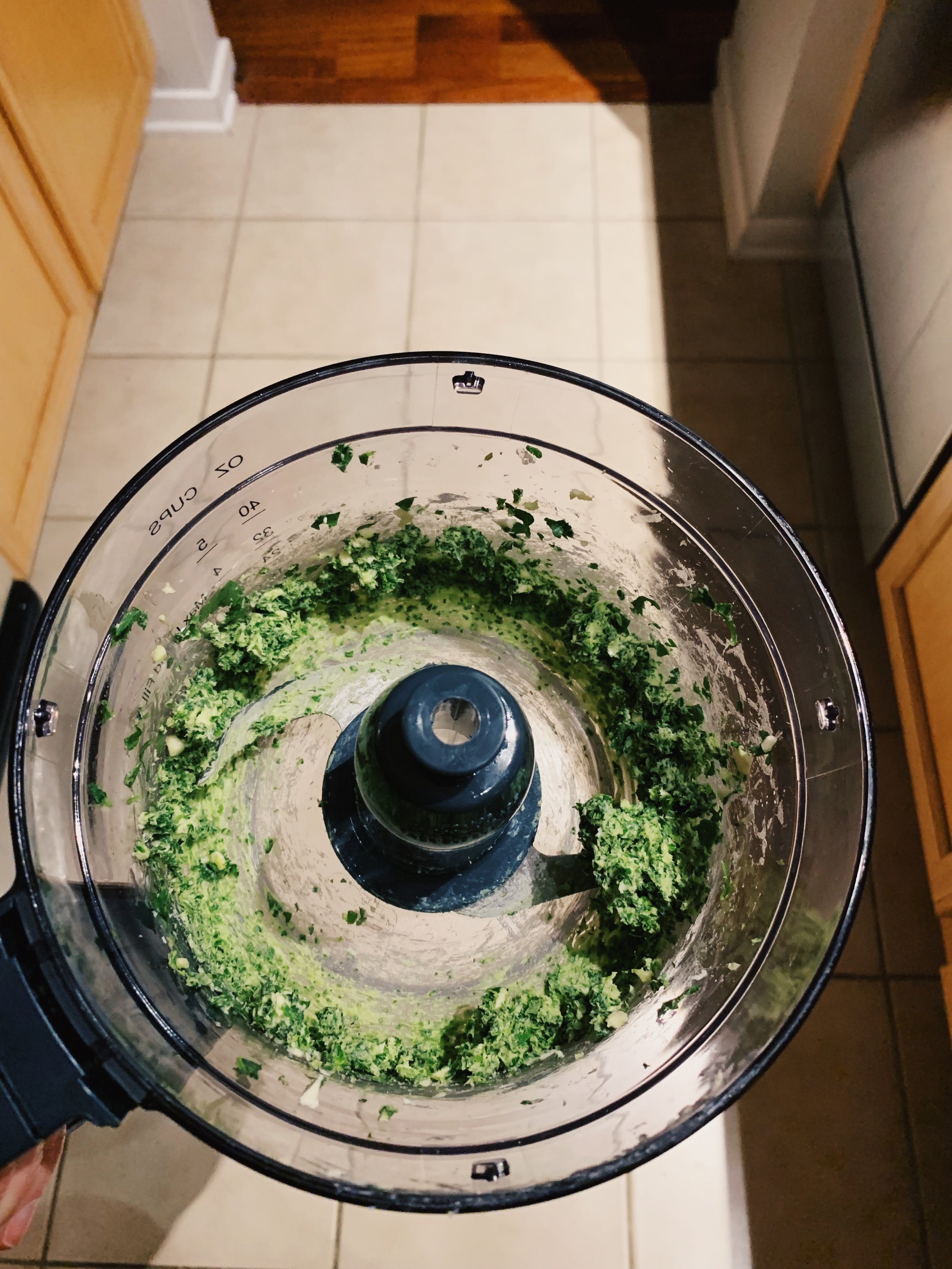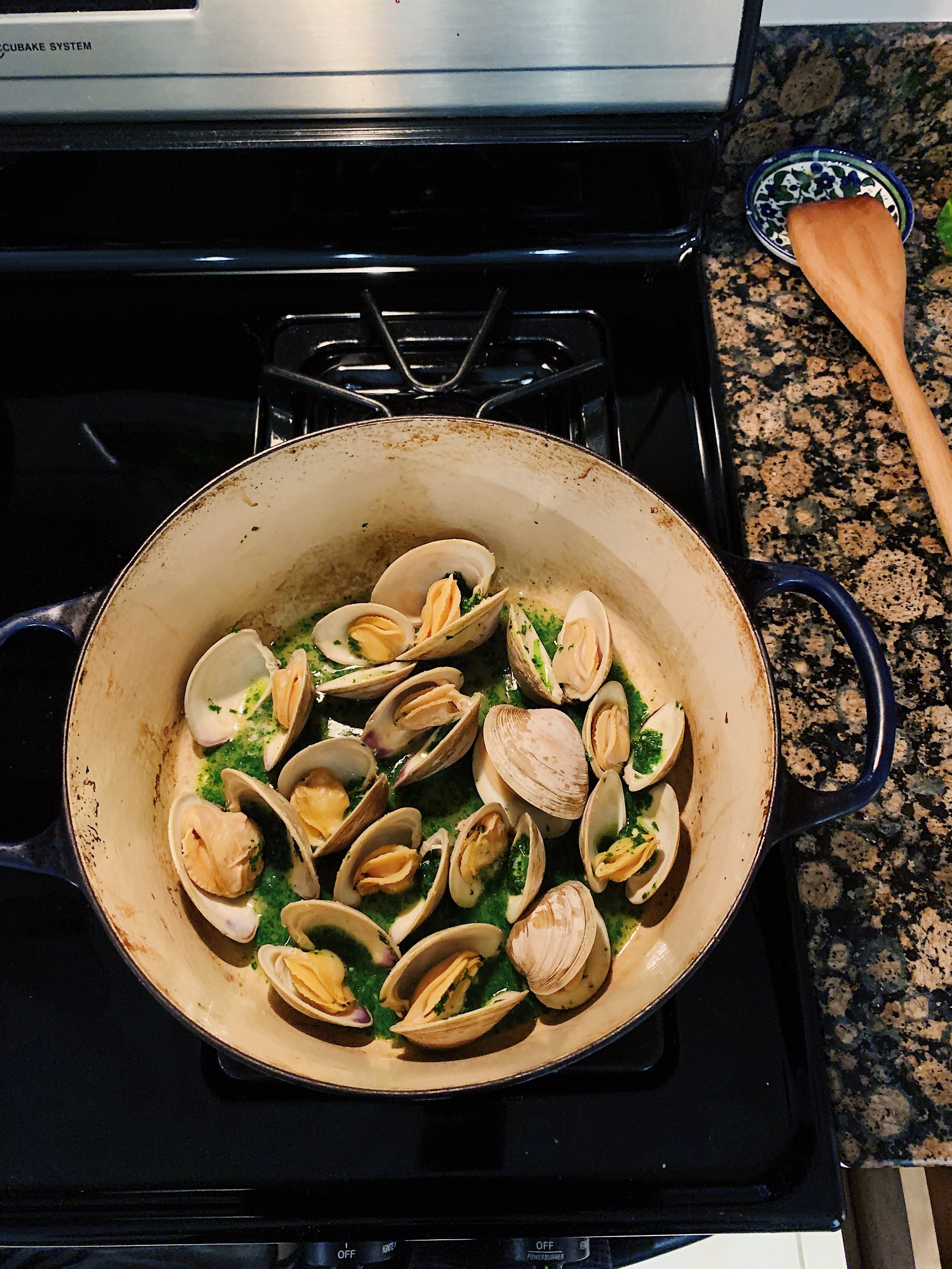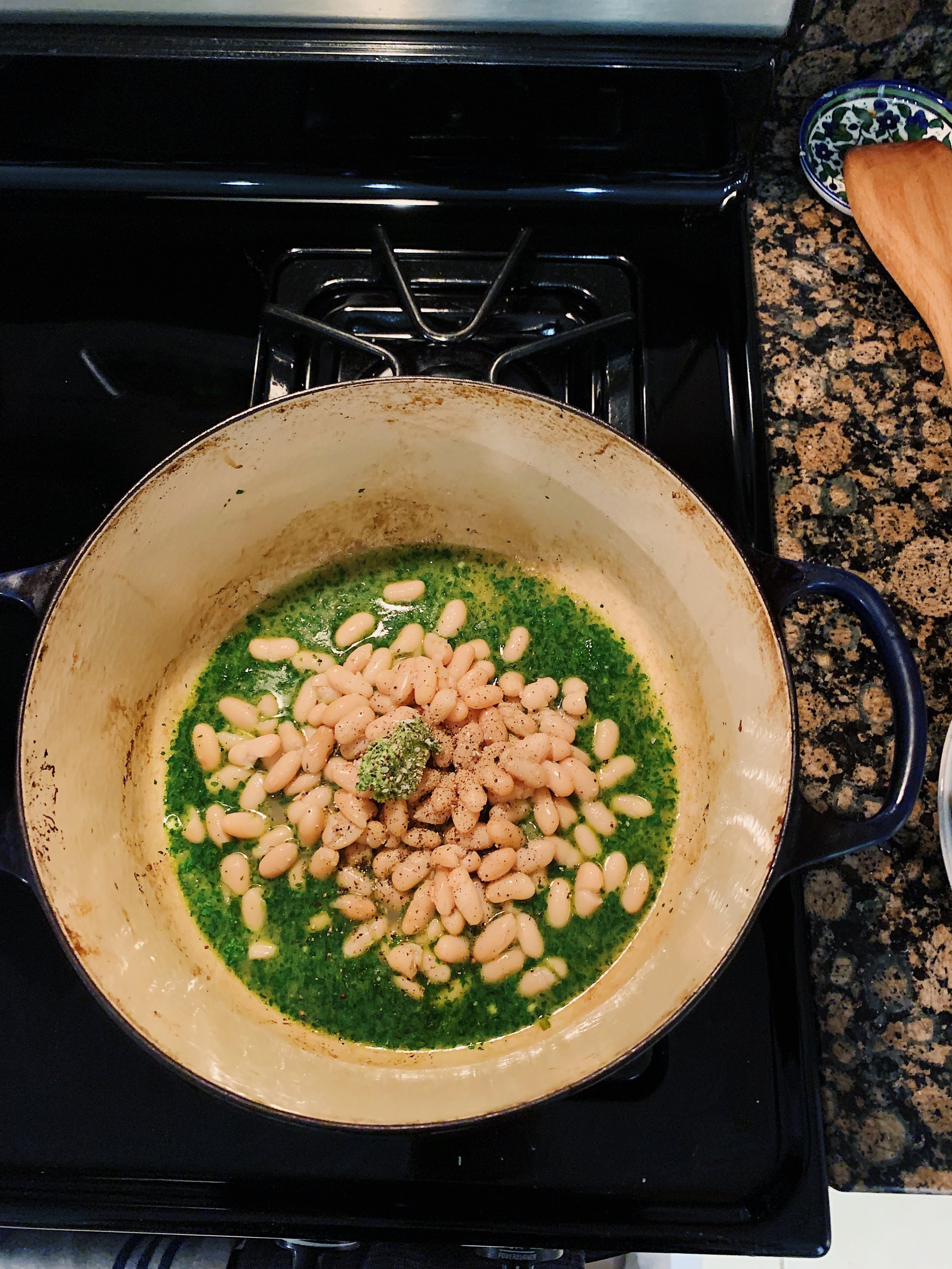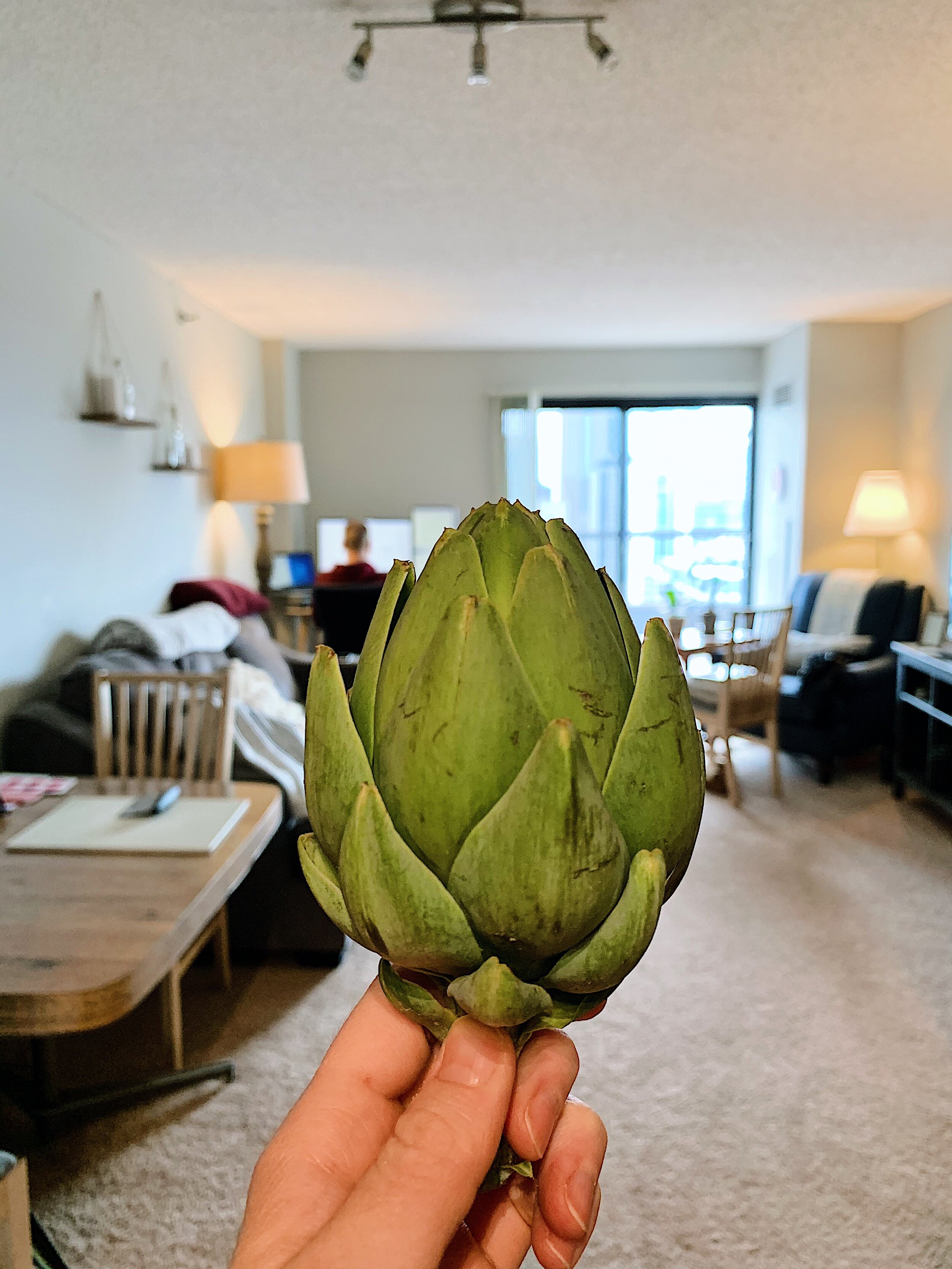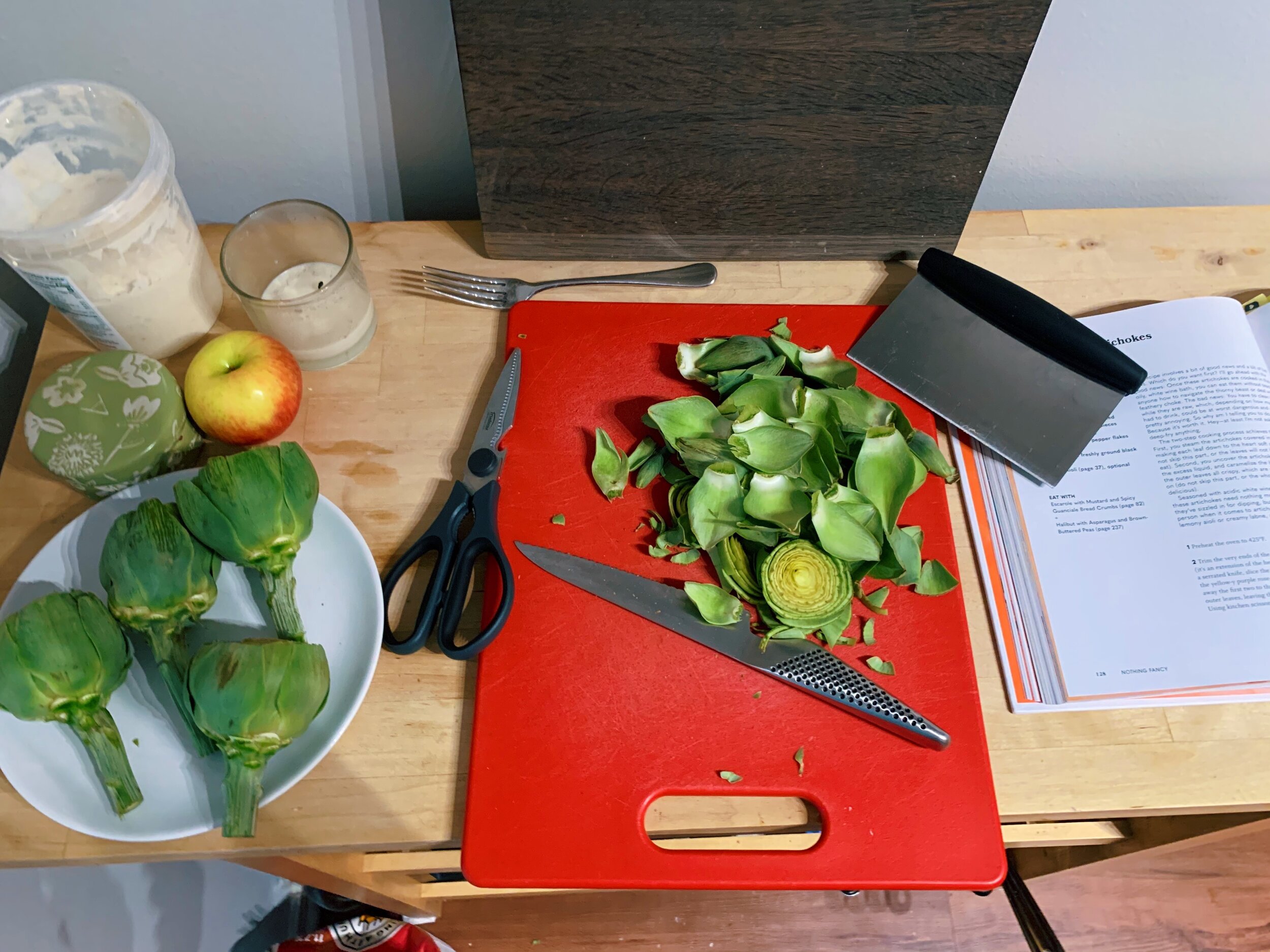I started this project as a complete clam novice: how to cook them, how to eat them, the fact that there are different kinds of clams — I hadn't the slightest idea. I remember feeling very intimidated by the task of ordering them at the grocery seafood counter. Even more intimidating was the thought of cooking them. And then, after just one attempt, I realized that clams are perhaps the most foolproof seafood I could ever cook.
As long as you’ve scrubbed their shells (they tend to have gunk stuck to the outside that will come off with a little handling under cold, running water), placed them in a hot pot with a lid and a bit of liquid to create steam, and can physically shake a pot back and forth a few times, clams are a piece of cake. (Cake is better than clams, tbh, but let’s not get into semantics.)
The parsley butter took more work than the clams in this recipe. I already had my food processor on the counter from making green romesco for Alison’s four-bean salad, so I opted to use it for smashing the butter, parsley and garlic clove together. Some people have asked how I decided when to make certain recipes. One answer is laziness. “You mean I don’t have to dig out my food processor and clean it a second time?”
Once my clams were cleaned and ready, I started by sizzling a finely grated garlic clove in some olive oil in my Dutch oven. After it released its fragrance, I poured in some leftover Sav Blanc (and yes, this was like 6-day old wine from the fridge that honestly tasted just fine for this purpose.) Once the wine had reduced, I placed the clams in the pot and fit the lid so they could steam. I made just a half recipe, which reduced the wine needed to just two Tbsp. But even that little bit of wine was enough to cook the clams and infuse them with plenty of flavor. Once opened, the clams were ready for dollops of parsley butter. It took some coaxing to get the globs to land into each open shell.
Pro tip: when removing hot clams from a pot, don’t be foolish. Wear an oven mitt or use tongs. You will burn your fingers otherwise. Just ask my thumb and forefinger.
The remaining melted butter and clam juice provide a nice warming liquid for the can of cannelini beans added at the end. I served it all with lemon wedges and sourdough bread, along with a lemony kale salad.
Jordan didn’t love this dish — he said it was too salty, which must have come from the clams themselves because I added very little salt myself. I felt that there was a bitterness to the dish, a sort of soft sourness that’s hard to describe otherwise. Maybe the wine was too far gone? Maybe this needed something creamy to balance the bitter? I think I’ll stick with Alison’s other clam recipes in the future, particularly her Clams and Cod in Heavy Cream (minus the cod - just the clams) and her Clam Pasta with Chorizo and Walnuts.
214 recipes cooked, 11 to go.



